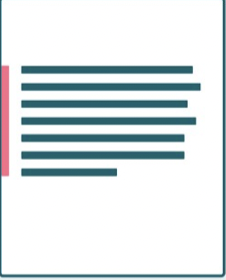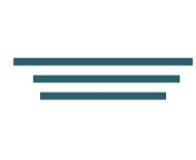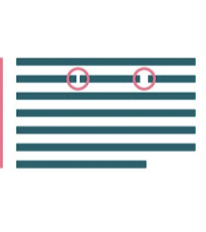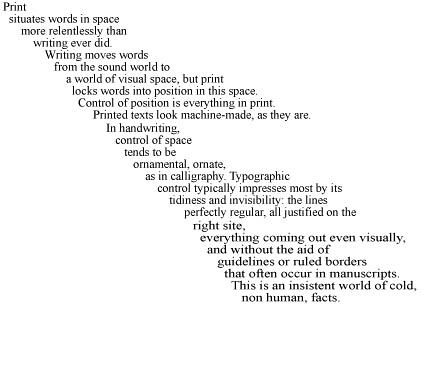Typography- Graphic Design
5.0(1)
5.0(1)
New
Card Sorting
1/103
Earn XP
Description and Tags
Study Analytics
Name | Mastery | Learn | Test | Matching | Spaced |
|---|
No study sessions yet.
104 Terms
1
New cards
Serifs
feet/ extensions that are finishing strokes of letterforms/ also known as footers
2
New cards
Bowls
rounded letters (like on the "a")
3
New cards
Arms
strokes that extend from the stem ("E")
4
New cards
Ear
sticks out of letter
5
New cards
Spine
curve ("S")
6
New cards
shoulder
curves
7
New cards
Leg
extends to baseline
8
New cards
Tail
hangs down
9
New cards
Cross bar
horizontal stroke in middle of letter ("H")
10
New cards
Cross stroke
crosses over stem ("f")
11
New cards
Bar
line in between the space of where a letterform connects ("e")
12
New cards
Counterspace
enclosed space within a letter ("a")
13
New cards
spur
think cowboy spur on boot
14
New cards
jot
dot that can be seen in lowercase "j" and "i"
15
New cards
terminal
endpoint of a letter
16
New cards
apex
when two strokes come to a point
17
New cards
link
connecting stroke
18
New cards
ligature
connection between a specific pair of letters/smooths connection for legibility
19
New cards
examples of ligatures
ff, fl, fi, ffi and ffl
20
New cards
French word for "no"
Sans
21
New cards
What are the five basic classifications of a type face?
Old style, Transitional, Modern, Slab serif, and Sans serif
22
New cards
Oldstyle
Roman serif type created between late 15th century and mid 18th century; low contrast between thick and thin strokes, thick bracketed serifs, long ascenders and descenders, body has smallish spaces
23
New cards
Transitional
stylistic bridge between Oldstyle and Modern; sharper and flatter serifs, tighter bracketed curve, stress in the curve is more vertical, higher contrast between thick and think strokes,
24
New cards
Modern
made its first appearance in late 18th century; extreme contrast between thick and thin strokes, ultra thin unbracketed serifs (horizontal or nearly horizontal)
25
New cards
Slab serif
emerged in mid 18th century; useful for signage, has weight and strong presence, serifs are usually unbracketed or square, lack of contrast between strokes (almost equal weight)
26
New cards
Sans serif
emerged in late 1800s; evolved from needs of advertising
27
New cards
What are the three main categories of Sans serif?
Grotesque sans serifs, Humanist sans serif, Geometric sans serif
28
New cards
Grotesque sans serifs (Gothic)
slight variations in stroke width, letters are fairly wide and rounded letters are often a bit squared off
29
New cards
Humanist sans serifs
proportions of classical Roman letters, if you look closely you will see some of the proportions of hand-letter Roman letters
30
New cards
Geometric sans serifs
reflect the modernist movement of the early 20th century; based on the geometric forms of the circle, square, and triangle;
31
New cards
On a typewriter, how are the letters spaced?
monospaced
32
New cards
Where are commas and periods placed when using quotations
inside of the quotation marks
33
New cards
What is a widow?
a word or part of a word that is hanging out at the end of a paragraph
34
New cards
What is an orphan?
a word or a part of a word at the top of a column
35
New cards
How many spaces do you put after punctuation on a computer?
one
36
New cards
Explain the Gestalt Theory
assembly of elements is perceived as more than the sum of it's parts
37
New cards
What are the Gestalt Laws?
Continuity, closure, common fate, figure/ground, proximity, similarity, and symmetry
38
New cards
A lowercase "w" is wider than a lowercase "i" on a computure
True
39
New cards
Who helped in the creation of the typographic measurement system?
Gutenburg
40
New cards
What did Gutenburg invent?
Printing press
41
New cards
What is alignment?
arranging letters well
42
New cards
What are the types of alignment?
Flush left, flush right, centered, justified, and random
43
New cards
Kerning
adjustment of the spaces between two specific letters
44
New cards
Tracking
adjustment of the space between a group of letters
45
New cards
Where will the narrowest space be in type?
With rounded letters side by side ("po")
46
New cards
Where will the medium wide space be in type?
With a straight side and a rounded side ("ho")
47
New cards
Where will the widest space be found in type?
When two straight typefaces are next to one another ("HH")
48
New cards
How many picas are in one inch?
6 picas
49
New cards
How many points are in one pica?
12 points
50
New cards
How many points are in one inch?
72
51
New cards
Fill in the blank: Heavy strokes can _________
distort small type
52
New cards
True or false: Never downsize acronyms or numbers.
False
53
New cards
What is the primary goal for type?
To visually communicate
54
New cards
What is the difference between text type and display type?
Text type is designed to be read in large quantities vs Display type is designed to be read in small quantities
55
New cards
What size should text type usually be?
8-10 point
56
New cards
What size should display type usually be?
14+ point
57
New cards
Should be "icing on the cake" for typefaces:
Display text
58
New cards
What is the minimum number of words per line in order to avoid gappy word spacing?
6
59
New cards
When do we stack text?
Never
60
New cards
Lines of text are measure in:
Picas
61
New cards
How did Debra Adler specifically redesign the prescription bottles?
Changed the typographic hierarchy, adding color, enlarging most important type, and using a more legible typestyle
62
New cards
What are dumb quotes?
Used for feet or inches
63
New cards
What are smart quotes?
Used for genuine quotations, the two pairs are flipped
64
New cards
Why is word spacing important?
Legibility and readability
65
New cards
What is one way to know how type faces go together?
Choose similar body heights and make the styles different for a contrast
66
New cards
When combining typefaces, they should do what?
Live harmoniously with one another
67
New cards
How do you organize and identify type?
Typographic classification
68
New cards
Instead of stacking text, what is an alternate solution?
Tilting the text onto its side
69
New cards
What is typographical hierarchy?
Visual organization
70
New cards
When is it acceptable to stretch and squash text?
Never
71
New cards
True or false: It is acceptable to artificially bold typefaces.
False
72
New cards
What is an alternate solution to artificially bolding typefaces?
Find a typeface that has a bold variation for it
73
New cards
Why are grids the building blocks of design?
saves time, unifies project, dividing space, arranging content, contains text, give structure, cohesiveness to project
74
New cards
True or False: Computer typography is proportional.
True
75
New cards

This is an example of what alignment?
Flush left (rag right)
76
New cards

This is an example of what alignment?
Flush right (rag left)
77
New cards

This is an example of what alignment?
Centered
78
New cards

This is an example of what alignment?
Justified
79
New cards

This is an example of what alignment?
Random (Assymetrical)
80
New cards
Monospaced
width of letterforms share the same between all other letterforms
81
New cards
What are the 3 don'ts of scale and contrast?
1. Make everything look important
2. Not being bold enough
3. Not understanding how to use contrast on complex/busy background
2. Not being bold enough
3. Not understanding how to use contrast on complex/busy background
82
New cards
True or False: Typography can be emotional.
True
83
New cards
True of false: The more effects the better.
False
84
New cards
Give examples of enviromental design and way finding
Airports and Stadiums
85
New cards
What is the best way to educate the typographical eye?
Pay attention to the world around you, typefaces are everywhere
86
New cards
When can you break the rules of typography?
When you understand them
87
New cards
Type is measure in
points
88
New cards
What are proper proportions?
the way in which typographic elements interact with each other
89
New cards
What is the typographic theory of relativity?
the role of proper proportions in typography
90
New cards
What is a type family?
a group of related type faces which share similar design characteristics and are designed to work together
91
New cards
True or false: Type has a personality.
True
92
New cards
What are the three most common variations in a font family?
Weight, width, slope
93
New cards
Part of a letter than extends below the baseline are called:
Descenders
94
New cards
Typographical color is based on what four variables?
Typeface, size, leading, and tracking
95
New cards
Part of a letter than extends above the x-height are called:
Ascenders
96
New cards
X-height
the height of the type
97
New cards
What are the invisible boundaries of extenders called?
Ascender and Descender lines
98
New cards
Type sits on a ________
baseline
99
New cards
What is the invisible boundary around the shape of a letter?
body width
100
New cards
What is the shortest of all dashes?
Hyphen